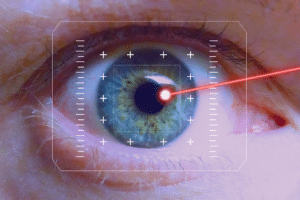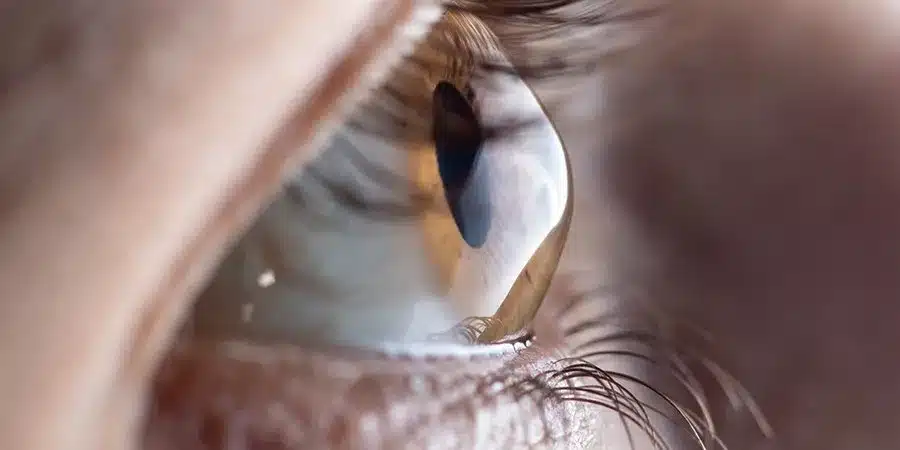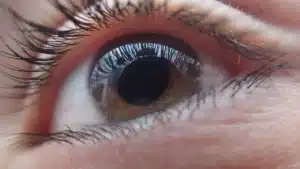We often don’t give our eyes enough credit for all they do on a daily basis. In fact, most of us don’t understand just how important our eyes are until we experience an eye injury, eye disease, or any other eye condition — which can occur at any time, no matter how old or young you are.
As much as we wish eyesight and eye health were perfect for everyone, that’s simply not the case. It’s unfortunate, but there is a wide range of things that can go wrong with your eyes and vision — all of which can have a negative impact on your ability to live a fulfilling and happy life.
Keratoconus is one of those many things that can go wrong and it affects nearly one in every 2,000 individuals. Cases of keratoconus normally begin during puberty years and progress well into an individual’s 30s and 40s. While there are ways to treat it, it’s best to catch it in the early stages.
So, what is keratoconus?
Keratoconus is an eye condition that affects the cornea of the eye, which is the clear, outer layer in front of the eye that focuses light on the eye. The cornea is mostly made up of water and collagen, which is what gives it the regular, round shape that’s necessary for clear vision.
In people with keratoconus, thinning of the cornea results in it losing its round shape. Instead, the surface of the cornea starts bulging out into an irregular cone shape, which impacts vision and could potentially lead to vision loss. It normally affects both of your eyes at the same time.
Some symptoms of keratoconus include poor vision at night, glaring and halos around lights, irritation of the eyes, eye pain, sensitivity to bright lights, blurred vision, or sudden worsening of vision. It’s normally diagnosed using corneal topography administered by an eye doctor.
Treatments for Patients With Keratoconus
Although the exact causes of keratoconus are still not fully understood by ophthalmologists to this day, there are a variety of ways to treat it and improve your vision for the future. The treatment your eye doctor recommends is largely dependent on the severity of the keratoconus in the cornea.
When caught in the early stages, patients with keratoconus are normally directed to wear glasses or a special type of contact lens. Progressive keratoconus could be treated with therapy, while advanced keratoconus will likely require surgery to correct and improve vision.

Don’t worry, we’re going to detail each treatment available and what stage that treatment is considered by your ophthalmologist. Let’s take a look!
Lenses for Keratoconus Patients
The early stages of keratoconus are normally treated with glasses or soft contact lenses. As the keratoconus worsens, these treatments become ineffective and will result in needing a different type of lens to further correct vision. That’s why regular visits to your doctor are important.
Let’s take a closer look at all the different types of lenses that could help treat keratoconus:
Glasses
In the beginning stages of keratoconus, glasses are designed to improve blurred vision. You’ll need to frequently change your prescription.
Soft Contact Lenses
If glasses aren’t your style, soft contact lenses provide the same type of treatment as glasses. As the cornea changes shape, your prescription changes.
Hard Contact Lenses
Also known as gas-permeable lenses, a hard contact lens is made to fit your cornea and is usually uncomfortable at first, but you’ll adjust to them.
Hybrid Lenses
If you don’t adjust to hard contact lenses, a hybrid lens is designed with a hard center and soft outer ring for increased comfort.
Piggyback Lenses
This is a method that involves piggybacking a hard contact lens on top of a soft contact lens for added comfort. It’s similar to a hybrid lens.
Scleral Lenses
With more advanced keratoconus, a scleral lens sits on the white part of your eye and hovers over the cornea without touching it.
No matter what type of lens you end up utilizing, none of them are designed to cure your keratoconus. Instead, they’re designed to improve your vision so you can live a normal, healthy life. As it worsens, there will be other treatments available to ensure your vision doesn’t worsen.

Surgery for Keratoconus Patients
When your keratoconus symptoms worsen, your eye doctor will likely recommend surgery to further correct your vision for the future. It’s normally recommended when there’s scarring in the cornea, lenses are ineffective, or the patient is unable to wear lenses for whatever reason.
Let’s take a look at the three most prominent types of surgeries for keratoconus:
Penetrating Keratoplasty
This is a full corneal transplant that is effective with extreme thinning or scarring of the cornea. The central cornea is replaced with donor tissue.
DALK
Also known as deep anterior lamellar keratoplasty, this procedure preserves the inside lining of the cornea, which is also known as the endothelium. The rest of the cornea is replaced with donor tissue.
Corneal Ring (INTACS)
This is a type of corneal implant that’s C-shaped and designed to flatten the cornea and improve vision, especially when combined with a contact lens.
Although these surgeries are generally very successful, complications can occur that might result in the use of hard contact lenses once again. You should always make sure you’re seeing an ophthalmologist that has the experience and specializes in treating patients with keratoconus.
Therapy for Keratoconus Patients
The final treatment we’re going to detail is a newer type of treatment called corneal collagen cross-linking. It was recently approved by the FDA as an effective treatment in April of 2016. While it’s rather new, it can help stop or reverse the bulging of the cornea in some patients.
Corneal Collagen Cross-Linking
Usually administered in the early stages, this procedure involves treating the cornea with riboflavin eye drops and UV light. It stiffens the cornea and prevents any changes in the shape of the cornea’s surface. The primary goal of corneal cross-linking is to slow or stop the progression of keratoconus and avoid a corneal transplant!
Whether you need corneal cross-linking , corneal transplant surgery , corneal implants, or a special type of lens designed to treat keratoconus, you can trust Milwaukee Eye Surgeons when improving your vision for the better. Contact us today to schedule your appointment!



